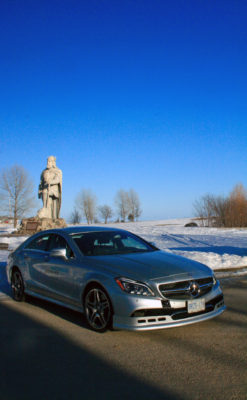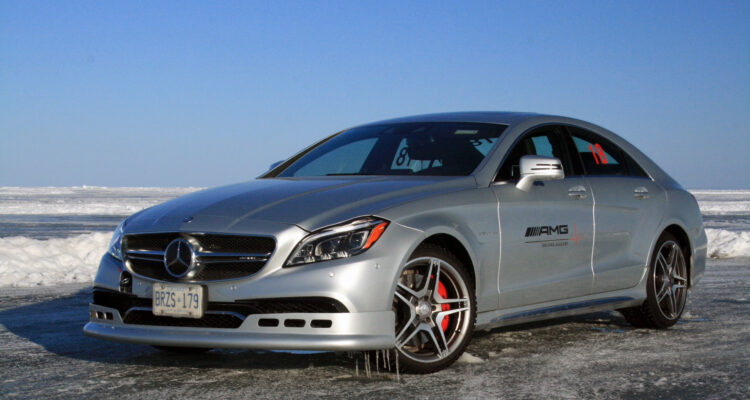The phrase “slow is fast” applies no more succinctly than to ice racing.
About a dozen journalists are here, in the centre of the continent, thrashing about race tracks — Mosport, Tremblant, Laguna — carved into the ice on Lake Winnipeg. Some are more successful than others.
It’s the AMG Winter Sporting program, a $3,995 or $4,995 event catering to Mercedes customers and others, and it’s a crash course in ice racing.
For the media, it was a day and an evening of slip-sliding, snow-spraying, inertia-defying fun, but it was also a excellent refresher in winter-driving techniques.
Danny Kok, whose Driving Unlimited runs driving programs for Mercedes-Benz Canada, said the primary objective of such programs is to build customer relations, establish brand identity and, to an extent, sell cars.
But he said the key takeaway for winter driving is summed up in two words: Don’t Panic.
Because you don’t need to.
We would hit sharp corners at speeds that would send the uninitiated off into the snowbanks, but by managing the weight distribution of the car, and controlling what appears to be out of control, we found very fast techniques to not only make it around the corner, but keep it out of the weeds.
Ice racing is entirely different than track racing. On the track, you drive the fastest by managing weight to keep the car in balance. On ice, you often gain more traction by loading up weight on the wheels to the outside of a turn, pressing them into the ice and allowing the studs and tires to find purchase.

Theoretically, it’s just like skiing. To turn in downhill skiing, you press down on the ski to the outside of a turn, contrary to what might seem logical, which is leaning into the inside of a turn as though you were on a motorcycle or snowmobile.
On the track, slides are slow. On ice, slides are the only way to carry speed through a turn.
“You learn that by managing weight, you can find grip and maintain control,” Kok said.
For example, in a sharp turn, you would first steer in the direction of the turn, usually earlier than you would if you were on a track. Then you apply braking. This transfers weight to the front tires. They dig in, and then the rear breaks free. If you do it right, you can carry a drift throughout the turn, setting yourself up perfectly to straighten the wheel and jump back on the gas.
It is a technique you should try to avoid on the road, but if things go south, knowing this can save your life.
Gimli was chosen as the North American base for the AMG Winter Sporting program and is the first place other than Sweden to host the program.
JoAnne Caza, Mercedes-Benz Canada spokeswoman, said after AMG in Germany approached Mercedes-Benz Canada to locate a winter program in Canada, choosing Gimli happened fairly quickly.
Just an hour north of Winnipeg, Gimli is centrally located for most of North America. And having held a winter media program previously, Mercedes knew what Gimli — the world’s largest Icelandic community outside of Iceland — had to offer.
“We came here and we realized there was tremendous opportunity — the lake is so big — and the hotel is right by the lake,” she said. “So when we looked at everything, it really was a no-brainer.”
AMG hosted about 126 participants, and kept the town’s coffers ringing, from mid-January to late February. Guests came from Canada, the United States and Mexico.
Kok is already setting dates for next year, and plans to make the Gimli program an annual event, with an expansion of the 192 spots possible.



